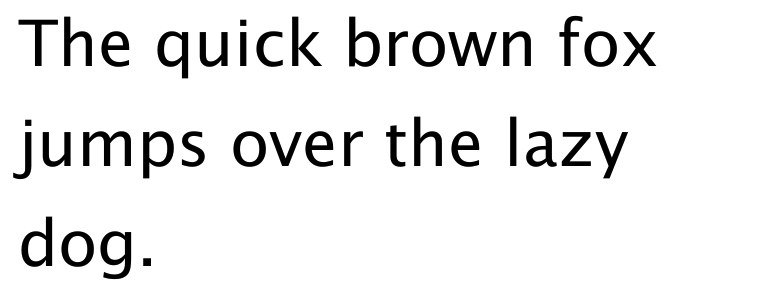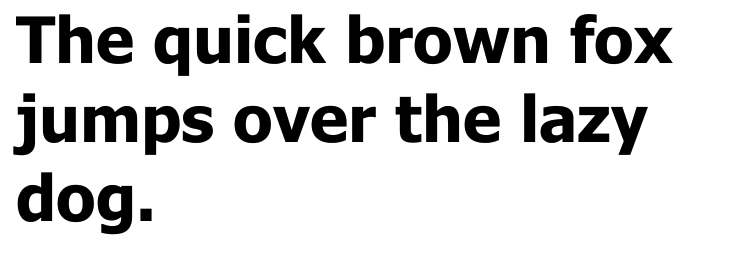Send With Confidence
Partner with the email service trusted by developers and marketers for time-savings, scalability, and delivery expertise.


Time to read: 11 minutes
Your emails are a collection of sentences and words. Words are a collection of characters, and characters are a collection of email fonts.
That’s why you need to put the same amount of time and attention toward your email fonts as your copywriting—it’s the foundation of your messages.
However, not all fonts are equal, especially with your email program. The best email-friendly fonts will make your campaigns shine, while the not-so-safe web fonts can make your designs go unnoticed.
Fortunately, you don’t have to guess when choosing the best email font for your campaigns. Whether designing a brand-new email newsletter or updating your business email signature, we have the fonts you need.
Here’s everything you’ll learn in this ultimate guide to email fonts:
Email-safe fonts are accessible on the widest range of computers, devices, and applications. These fonts load in your recipients’ email inboxes, whether it’s Outlook, Gmail, Android, or iPhone.
However, email-safe fonts aren’t foolproof. Instead, these preserve your fonts from any alterations.
You’ll also want to resist the urge to use any font. Why? Because email clients don’t always display specific fonts and will default your text to an email-safe font, which can impact your emails’ overall design, layout, legibility, and quality. Therefore, it’s crucial to choose the best email font for your email campaigns.
The average email attention span is 11.1 seconds per email, although it’s (surprisingly) increasing. So in addition to design and branding considerations, it’s crucial to understand these data-backed reasons for finding the right email font for your campaigns:

We recommend the following email-friendly and web-safe fonts. Use these email fonts to increase the chances of your text rendering correctly with your recipients:

Arial is a contemporary sans-serif email-safe font option. With it, you’ll find curves that give it a modern feel. Arial is an excellent font for body copy or headlines across email campaigns.

Courier New has a typewriter-like appearance with serifs. It doesn’t have a modern look and feel, making it more appropriate for movie scripts and manuscripts than email.

Georgia is a classic serif font from Microsoft used in newspapers and magazines. It gives an authoritative (and formal) appearance to your emails and is an excellent option to enhance the readability of densely worded content.

Helvetica is the most popular digital font for titles, brand names, taglines, slogans, and headlines. It’s not particularly distinctive but is a good option for more than emails.

Lucida Sans Unicode is a basic sans-serif variant of the Lucida font that doesn’t have bold or italics versions.

Tahoma is a font designed by Microsoft to improve the visibility of small text on screens. It translates well to the compact layout of emails.

Times New Roman is an email-safe font appropriate for just about anywhere. It’s not a contemporary font—it’s been around for almost 100 years—but it’s space efficient, legible, and familiar.

Trebuchet MS is a bold, digital-friendly font with an unmistakable look. While some characters appear classic and typical, others get creative (see the “g”).
Email-safe and web-safe fonts aren’t the same. Web-safe fonts exist only on the web. So you won’t find them in operating systems, devices, software, or applications. Instead, these get added to your communications and applications with plug-ins and snippets.
Most email clients support several web-safe email fonts, but there isn’t overlap between all of them. For example, Gmail supports Open Sans and Roboto web fonts, but Outlook and Apple Mail don’t. However, each email client has a default font to revert to if it doesn’t support a web font. Here are a few:
So rather than designing one email for Helvetica, another for Roboto, and another for Calibri, use email-safe fonts that work universally across most email clients.

If you use a web-safe email font instead of an email-safe font, we recommend selecting (and testing) a font alternative. Consider one of the following options:

Raleway is a sans-serif font with thin, font-weight lines and generous letter spacing for a comfortable reading experience without compromising page space.

Roboto uses friendly, open curves with natural widths. It’s the default font on Android, Google Play, YouTube, Google Maps, and Google Images.

Open Sans is a font optimized for print, web, and mobile interfaces, thanks to its neutral, friendly look. The upright nature and letter spacing prioritize legibility.

Poppins has a clean look and font style that make it perfect for headings, subheaders, and standout paragraph copy. It has a great balance between playful and professional.

Oswald is a tight, condensed font that lets you incorporate more characters without compromising readability. Use Oswald in headlines to make a bold statement while maintaining a balanced appearance vertically and horizontally.

Ubuntu font features a contemporary style with a unique flair, balancing a distinct design with professional use cases.

Merriweather is an open-source serif font designed for digital reading. The characters stretch tall but remain compact to increase legibility without wasting space.

Rubik uses slightly rounded corners and low-stroke contrast. Access this open-source typeface for free on Google Fonts.

Quicksand, originally designed for display purposes, is a sans-serif font that does well in small print sizes too. It works great for body text in emails.

Oxygen is a web-safe font for web browsers, desktop computers, and mobile devices. It pairs nicely with Oswald and Quicksand.

Lato is a font with 18 styles and weights and 3,000+ glyphs per style. Its semi-rounded edges make it one of Google’s most popular fonts.
Don’t limit yourself to a single email font for all your communications—certain ones perform better as headers, body copy, or signatures. Below, we’ve listed the best fonts for several email use cases.
We recommend using a web-safe font with an alternative, email-safe font for your email signature. Since it’ll likely be the same in most emails, you can optimize your web-safe version and alternative options to ensure a polished, consistent appearance.
The following web-safe email fonts are our recommendations for email signatures:
As alternative options, we recommend:
Some fonts are playful, while others are more professional—and some unique ones have a balance between both. For professional email fonts for business, we recommend choosing fonts that display trust and class:
Email newsletters often must fit a lot of content into a small space. If you struggle with this when designing your campaigns, we recommend the following fonts for email newsletters:
Your email marketing campaigns should use multiple fonts to separate (and distinguish) headlines from the body copy. The following fonts pair well for email marketing campaigns:
Gmail is the most popular email platform with 1.8 billion active users, so there’s a high likelihood that much of your audience uses it. Using one of these web-safe fonts optimized for Gmail (with alternative options in case recipients use other inboxes) is our recommendation::

Once you’ve chosen a font, it’s time to optimize your fonts for email campaigns. This includes using them appropriately, increasing the readability, and improving the customer experience.
Remember, the purpose of your font isn’t to entertain: it’s to get recipients to read your emails and take action. So keep things direct and on brand.
While it’s crucial to embrace creativity to create emails that strengthen your brand and engagement, prioritize readability, comprehension, and user experience.
One way to get your fonts (any font) to show up correctly in an email is to add them to embedded images. However, sending image-only emails is inadvisable. Here’s why from Litmus:
Choose and test alternative fonts for your email campaigns, especially if you use web fonts instead of email-safe fonts. Each email client has default alternative options, but these are flexible.
To avoid choosing the wrong alternative font, find fonts with similar heights, serifs (or sans-serifs), and letter spacing.
Font size can help or hinder your email campaign. If it’s too big, the necessary text won’t all fit. But if it’s too small, subscribers will struggle to read it.
Email on Acid recommends using a font size of 14 pixels or larger. However, some email marketers will increase the font size on mobile devices to 16 or 18 pixels to improve readability.
Test your emails before sending them to ensure a desirable look across clients, browsers, and devices (iOS and Android). However, instead of creating accounts on Gmail and Outlook and sending yourself test emails to review on desktop and mobile, use Twilio SendGrid’s email testing tool.
It’s integrated into our email builder tool to streamline the testing process during the design stage. SendGrid’s email testing will also analyze your email to find broken links, display issues, and even spam content.
Using too many fonts can create a distracting, disjointed experience. We recommend using a maximum of two fonts that work well together.
Consistency in your email is also crucial. For example, if you use one font in a headline and another in the body copy, don’t alternate between them halfway through the email.
Regardless of your font choice, consider line and letter spacing when designing your emails. Too little or too much spacing makes reading difficult.
We recommend using letter spacing for all uppercase text because capital letters can sometimes blend into each other. Also, consider adding letter spacing for smaller-than-usual text to ensure readability.
Ready to send better-designed emails? Whether you need free email templates to get started or custom fonts for your emails, we’ve got your back:
Sign up for a free account today to see our email design tool in action.
Partner with the email service trusted by developers and marketers for time-savings, scalability, and delivery expertise.